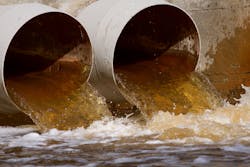Cleaning up polluted water with lead-adsorbing microbots
WASHINGTON — April 11, 2016 — Hundreds of thousands of tiny microbots, each smaller than the width of a human hair, could be deployed to absorb and remove toxic heavy metals from industrial wastewater, according to a study published in Nano Letters.
An international research team led by the Max-Planck Institute for Intelligent Systems in Germany found that the self-propelled, graphene oxide-based microbots can clean water containing 1,000 ppb of lead down to below 50 ppb in 60 minutes — removing 95 percent of the lead.
Reporting on the study, phys.org said that the microbots can also be reused multiple times, potentially offering a more effective and economical way to remove heavy metals than existing methods.
“This work is a step toward the development of smart remediation system where we can target and remove traces of pollutant without producing an additional contamination,” co-author Samuel Sánchez, at the Max-Planck Institute for Intelligent Systems; the Institute for Bioengineering of Catalonia in Barcelona; and the Catalan Institution for Research and Advanced Studies in Barcelona, told phys.org.
The tube-shaped microbots designed by the research team have three functional layers. The outer layer of graphene oxide adsorbs the lead contaminants in the water. The middle layer is made of nickel, which makes the microbots ferromagnetic so that their movement can be controlled by a magnetic field.
The inner layer of platinum gives the microbots the ability to self-propel through water by breaking down hydrogen peroxide into water and oxygen microbubbles, which are ejected from the back of the microbot.
When the microbots have completed their task, a magnetic field can be used to collect them from the water. They are then treated in an acidic solution to remove the lead ions. The microbots can be reused and the treated lead in solution can also be recovered and reused.
Next, the researchers hope to reduce manufacturing costs and mass produce the proof-of-concept microbots, and extend them to other contaminants.
